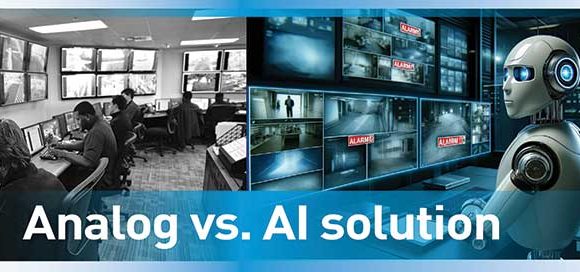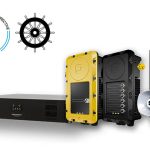From pick up to drop off – student tracking provides peace of mind

Student tracking solutions for school buses are allowing both parents and school administrators to keep track of students during their bus journey to and from school.
Izvor: a&s International
E-mail: redakcija@asadria.com
It’s a simple fact — parents want to know where their children are. Now, with student tracking solutions, this peace of mind can be offered to both parents, drivers and school administrators alike.
Most of the technologies used by school buses to increase safety (e.g., collision detection, surveillance cameras, GPS tracking, etc.) are not unique to school bus transportation – many of these technologies are already widely used in the transportation industry. What is unique to the school bus industry, though, is the proliferation of apps and student tracking technologies. With these technologies drivers and parents can track both the school bus and students on the bus, while also ensuring that school buses are as efficient as possible.
Different Types of Student Tracking
The latest solution for student tracking is to equip students with their own ID card which is swiped when getting on and off the school bus. This allows administrators and parents to view and track where students are during the school bus operation. Companies like Wireless inks offer passive and active RFID solutions integrated with fleet management to track students. The company’s student and school bus tracking fleet management solution provides visibility and control over the real-time location of students and buses while providing assistance in ensuring student transportation safety.
According to Gene Ballard, Smart Bus Program Manager at Kajeet, the following are required for an effective student tracking solution: full GPS services on the bus, ID cards for the students with RFID or NFC, and driver tablets (which some states prohibit). “The driver tablet is important as students will forget their ID cards and their information must be manually entered into a tablet,” he explained.
The Kajeet solution provides the connecting piece of Wi-Fi to ensure student tracking information can be transferred safely and securely. “Our SmartBus solution also includes the GPS services to: view the current location and location history of every school bus; visualize the position of buses across the school district with a breadcrumbs trail; and create custom reports, including when buses exceed the speed limit,” Ballard said.
Seon’s student ridership tracking solution is integrated with video, GPS tracking and route operations software. “Student tracking requires an RFID card, card reader, wireless connectivity (cellular) and interface with routing or tracking data. Most vendors offer pieces of this solution, leading to incompatibility and incomprehensible data reports. We offer a fully integrated video, routing and tracking solution,” said Justin Malcolm, Director of Product Management for Safe Fleet.
ReaXium has created a unique solution using mobile biometric devices that are outfitted on the school bus. “Upon boarding, students and bus drivers authenticate themselves with a device that captures their fingerprint or ID card which verifies who they are, when they boarded, and what bus and bus stop they should be going to,” explained Edgar Zorrilla, CEO of ReaXium.
Unlike cameras, GPS tracking and roll-call methods of student monitoring, which lack a big proponent in visibility, ReaXium’s solution removes the guesswork of which students are on the bus, what stop they will be getting off at, and when they will be getting off. “Parents and administrators can track the buses in real time and get notifications on student status. The ability to provide constant visibility throughout the bus route is critical in making sure that no child is not accounted for and to advocate safety for the greater community,” Zorrilla said.
Overcoming Challenges
School districts are always under strict budgets, and “extras,” like student tracking, are often seen as unnecessary despite their value. As such, solution providers are working with school districts’ restricted budgets so they can still reap the benefits of this technology.
ReaXium boasts a flexible business model to allow school districts to make the most of implementing its solution. “For starters, as a managed service provider, we don’t make districts take on a capital asset that will depreciate in value, instead our customers will pay a monthly fee that covers full-time monitoring and support as well as access to any software or hardware update,” Zorrilla explained.
Wireless Links offers low-cost options such as its RFID solutions integrated with GPS telematics. “We offer both passive and active RFID solutions in addition to the GPS telematics devices installed on the bus. Both are budget friendly options. For the passive RFID, the student card serves as a passive RFID card. When the student gets on or off the bus, he scans the RFID card by the reader to log the location and time of event. For the active RFID, each student is issued a personal RFTag with a unique ID. When students get on and off the bus, the RFTag automatically links and registers with the Piccolo Plus telematics device installed in the bus,” said Morgan Minster, Marketing Manager at Wireless Links.
While cost is a major challenge, Leslie Kilgore, VP of Engineering at Thomas Built Buses (TBB) pointed out that most school districts keep their school buses for 15 years or more. “Even if a school district does decide to install student tracking technology, some older buses may not be compatible with the technology, leaving only their newest buses (a small percentage of the overall fleet) equipped with the safety feature,” she said.
Education and technology awareness are also challenges. While schools districts are adopting more new, smart technologies in the classroom, understanding how technologies like student tracking work and the benefits are not always so easy.
For companies like ReaXium, with their unique biometric student tracking solution, educating users and exploring with them the effectiveness of its biometric solution is essential to its deployment. “Not understanding how biometrics works, how this would improve safety and security, what are the costs of this system are objections that we face,” Zorrilla explained. “As biometrics makes an advancement toward preventative security, people tend to have the negative connotation that their identity is at risk and that their personal information is stored on a database that everyone can view, which is not the case. In addition to biometrics, we offer card-based ridership solutions with the same solution.”
From a technical standpoint, Zorrilla noted connectivity and the potential for a bus route to cross blind spots as challenges. “However, our solution works online and offline. Any data collected during a lost connection or blind spot such as bus location, students entering and more is automatically synced and logged correctly when a connection is established again,” he added.
Still a Ways to Go
Tracking students can definitely have its benefits, especially in highly urban settings where safety and security may be more of a concern. However, at this point, with limited budgets, school districts will have a hard time spending on technologies like student tracking considering the overwhelming majority of school buses in the U.S. are not even required to have seatbelts. Although, with safety becoming more of an issue, certain school districts are sure to find such technology very valuable.
How Student Tracking Helps School Administrators and Drivers
Student tracking helps parents know where their child is while on the school bus; however, the technology also largely benefits school administrators and drivers.
Student tracking increases awareness on buses by verifying who is who and where. It also helps to provide parents with peace of mind, but more importantly allows school districts to more effectively manage their transportation.
Wireless Links’ solution helps school transport managers to communicate better with school bus drivers, know their driving patterns or violations, view the location of a school bus and receive instant warnings on exit from regular route, explained Morgan Minster, Marketing Manager at Wireless Links; thus assisting schools in managing their transportation effectively. Edgar Zorrilla, CEO of ReaXium, noted that one of the biggest issues with school bus safety is awareness of who is onboard, and what to do in a situation. “While implementing surveillance cameras and bus tracking software are some solutions to show the activity of the bus, they don’t accomplish the greater goal of accountability. This means; who enters and leaves, what time they did, and constant communication between the bus driver and the school,” he said. Student tracking solutions can help to resolve the imbalance of awareness that results in students boarding the wrong bus, not getting off at the right stop, and lack of updates for parents when they ask the school where their child is and the school is unable to answer that. Whether through a data plan or using mobile Wi-Fi, Zorrilla noted that smart school buses can now communicate with dispatchers and administrators in real time by automatically syncing their current rider list and their location, as well as sending any alerts dispatched by drivers. “Administrators can track buses and the students onboard from their secure web dashboard. Parents or guardians can also track the bus and their students using a mobile app.”
Student tracking can also make school bus drivers better. “For instance, our device acts as a student information manager meaning drivers can know how many students and who to expect at a stop,” Zorrilla explained. “Similarly, the device acts as an alert dispatcher letting drivers quickly tell administrators or families of an unexpected delay or incident.”
























